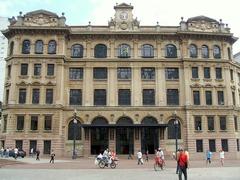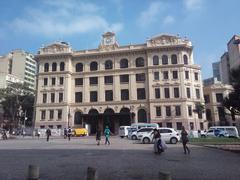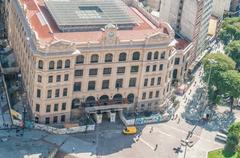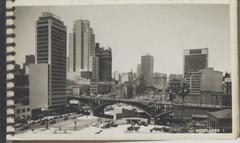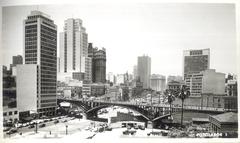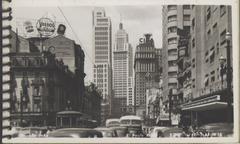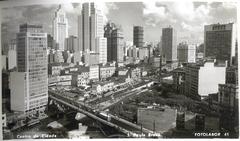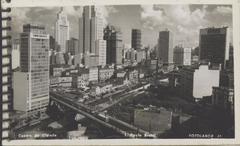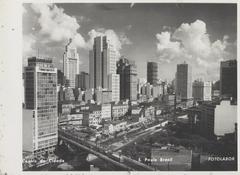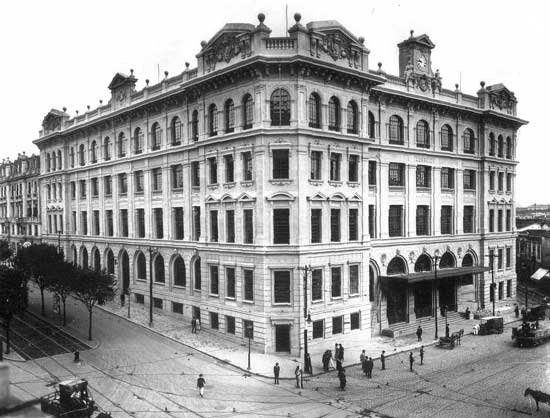
Post Office Palace São Paulo: Comprehensive Visiting Guide
Date: 14/06/2025
Introduction
The Palácio dos Correios, or Post Office Palace, stands as one of São Paulo’s most significant architectural and cultural landmarks. Located at Praça Pedro Lessa in the city’s historic heart, this early 20th-century monument blends neoclassical and Renaissance influences, reflecting São Paulo’s emergence as a modern metropolis. Today, it continues to serve both as the city’s central post office and as a dynamic cultural center, hosting exhibitions, concerts, and educational events that celebrate Brazil’s rich heritage (saopaulosecreto.com; en.wikipedia.org).
This guide details the Post Office Palace’s history, architectural significance, visiting hours, ticket policies, accessibility, guided tours, top sights, and travel tips—helping visitors make the most of their experience in São Paulo’s vibrant historical core (Arte Que Acontece; Arquitaliana São Paulo).
Contents
- Historical Overview
- Architectural Significance
- Visiting Information
- Accessibility
- Guided Tours & Events
- Nearby Attractions & Travel Tips
- Visitor Facilities & Amenities
- Frequently Asked Questions (FAQ)
- Conclusion
1. Historical Overview
Origins and Development
Commissioned after the Proclamation of the Republic to accommodate São Paulo’s booming population and commerce, the Palácio dos Correios was built between 1920 and 1922 on the site of a former military hospital. Its completion coincided with the centenary of Brazil’s independence, symbolizing national progress (saopaulosecreto.com). The project was led by the renowned Ramos de Azevedo Technical Office, with architects Domiziano Rossi and Felisberto Ranzini—who also worked on the Theatro Municipal—at the helm (exame.com).
Urban and Social Role
Upon inauguration, the building centralized São Paulo’s postal and telegraph services, supporting the city’s commercial and financial expansion. Its strategic location in the “historical triangle” placed it among other prominent landmarks, including the Municipal Theatre and São Bento Monastery (en.wikipedia.org).
In the 1970s, administrative functions moved elsewhere, but the palace retained its central post office and became a familiar city symbol (pt.wikipedia.org).
Preservation and Cultural Rebirth
Recognized for its historical and architectural significance, the palace was listed as a protected heritage site in 2012. Restoration in the 2000s revitalized the space, leading to the inauguration of the Centro Cultural Correios São Paulo in 2013, which now offers a rich program of cultural events (Arte Que Acontece).
2. Architectural Significance
Eclectic Style and Design
A prime example of eclecticism, the palace combines neoclassical symmetry, Renaissance detailing, and grand scale. The façade features decorative columns, arcades, and allegorical sculptures symbolizing communication and progress (Arquitaliana São Paulo). The building’s 15,000 square meters house grand staircases, stained glass, period elevators, and columned galleries.
Modern Construction and Restoration
The palace was among São Paulo’s first public buildings to use reinforced concrete. Restoration efforts have preserved original features while introducing new cultural functions, ensuring adaptive reuse and sustainability (ArchDaily).
3. Visiting Information
- Location: Praça Pedro Lessa, Centro, São Paulo.
- Opening Hours: Tuesday to Sunday, 10:00 AM – 6:00 PM. Closed Mondays and public holidays.
- Admission: Free for most exhibitions and events. Some special events may require tickets (check the official Correios website for details).
- On-site Postal Services: The ground floor houses the central post office and the Philatelic Agency.
4. Accessibility
The building is fully accessible, with ramps, elevators, and tactile signage for visitors with reduced mobility. Restrooms and seating areas are available, and staff are trained to assist as needed (UNA arquitetos).
5. Guided Tours & Events
- Guided Tours: Offered free of charge on weekends (typically at 11:00 AM and 3:00 PM); advance booking recommended.
- Special Events: The cultural center features rotating exhibitions, concerts, lectures, and workshops. Check the Correios website or event listings for the current calendar.
- Languages: Most tours and materials are in Portuguese. Private guides for English speakers can be arranged on request.
6. Nearby Attractions & Travel Tips
Nearby Attractions
- Municipal Theatre: Beaux-arts architecture and regular performances.
- Vale do Anhangabaú: Historic valley and public space.
- São Bento Monastery: Renowned religious site.
- Edifício Martinelli: Historic skyscraper with panoramic city views.
- Rua 25 de Março: Bustling shopping street.
Travel Tips
- Getting There: Easy access via Metro Sé or Anhangabaú (Lines 1 and 3) and numerous bus routes.
- Best Visit Time: Weekdays for fewer crowds; combine with nearby sites for a full day of exploration.
- Safety: Downtown is safe during the day but stay aware of your belongings. Avoid less-populated areas after dark (Nannybag).
- No On-site Café: Many cafes and eateries are located nearby.
7. Visitor Facilities & Amenities
- Restrooms: Available on all public floors.
- Accessibility: Ramps, elevators, and accessible restrooms.
- Postal Services: Purchase stamps, send postcards, or explore postal history at the Philatelic Agency.
- Photography: Permitted for personal use; flash and professional equipment may require special permission.
8. Frequently Asked Questions (FAQ)
Q: What are the visiting hours?
A: Tuesday to Sunday, 10:00 AM – 6:00 PM. Closed Mondays and public holidays.
Q: Is there an entrance fee?
A: Most exhibitions and areas are free. Tickets may be required for special events.
Q: Are guided tours available?
A: Yes, free on weekends; advance booking is recommended.
Q: Is the building accessible for visitors with disabilities?
A: Yes, with ramps, elevators, and accessible restrooms.
Q: Can I visit the post office inside the building?
A: Yes, the central post office and Philatelic Agency are open during regular business hours.
Q: Is photography allowed?
A: Yes, for personal use. Follow any posted restrictions.
9. Conclusion
The Post Office Palace is a living testament to São Paulo’s history, architectural innovation, and cultural vitality. Its blend of heritage preservation, contemporary cultural programming, and social inclusivity makes it essential for anyone seeking to understand and experience the city’s evolution. Plan your visit to immerse yourself in this architectural masterpiece and vibrant cultural hub.
For updates on exhibitions, events, and guided tours, download the Audiala app, follow the Centro Cultural Correios on social media, and explore our related guides to São Paulo’s historical and cultural attractions.
References
- This guide incorporates information from saopaulosecreto.com, en.wikipedia.org, SP City, Arquitaliana São Paulo, UNA arquitetos, Arte Que Acontece, ArchDaily, Time Out São Paulo, and the official Correios website.

